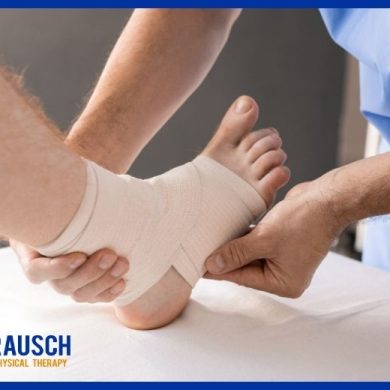At Rausch Physical Therapy and Wellness, we believe that movement is medicine—at every age and every stage of life. That’s why we’re excited to announce our new partnership with Fort Fitness,
How to Alleviate Tender Trigger Points
December 22, 2015 10:45 pm / Category: Physical Therapy
We’ve all felt it, that radiating pain that shoots throughout your head and neck when you touch a small spot in your back muscle. You may have heard of trigger points, but what are they exactly, how do they impact your body, and—most importantly—how do you get rid of them?
Trigger points are bands of muscle fibers that are not happy; it’s like a traffic jam of tension that fatigues your body of energy. Trigger points are essentially are a build up of metabolic waste products that blocks blood flow, short circuiting the motor units with excessive neuronal impulses. Or, plain and simple, trigger points are those tender bits you always massage at the end of the day that never really seem to go away.
Active trigger points are tender without physical touch. The latent trigger points only hurt when pressed on them, like when you get a massage. The latter are more common with acute injuries and are a way for the body to protect itself, so be nice to these ones if you try to work them out yourself.
So now that you better understand why trigger points hurt, now how do you get rid of them? For my patients suffering from active or latent trigger points, I suggest the following three solutions:
Fix #1: Straighten Up
Poor posture is the root cause of trigger points for the majority of people. Start thinking about your posture throughout your day; whether you’re sitting at your desk or working out, correct postural alignment will reduce chronic strain. A good illustration of how the muscle acts according to your posture is the Upper Crossed Syndrome diagram. I show this picture to my patients to help them understand which are the stretched out, weaker muscles vs. the bound up, tight muscles.
Proper Posture 101
Try to imagine that there is a cable pulling you upward by the back of your head. Gently tuck your chin and roll your shoulders back and all-the-way down (Ease off a little so no strain is felt.) Next, find your neutral pelvis position: place your hands on your hips and find the middle between arching your back and rounding your back. This middle ground is the neutral pelvis that takes stress out of the muscles, ligaments, discs, and joints of the lower back.
Perfect posture is not easy to hold for long periods of time, so try building a new habit of getting up every 20 to 30 minutes to correct your posture. After about three months of actively correcting your posture, your body will automatically correct itself and with less difficulty.
Fix #2: Cross Train
Cross training is a great way to balance the body; by strengthening the opposite muscles used during your typical sport/activity, you’ll avoid overuse or burn out patterns. If you play a sport that requires a lot of lower body power, such as soccer, take a couple days to focus on working out your upper body.
Cross Training for Cyclists
If you’re a cyclist, a great cross training workout for scapular strengthening is what I call the “Three-way Band Exercise.” Start your workout on a trainer with a resistance band in your hands. Organize your posture and spread the band with thumbs facing backward with a slight shoulder-blade pinch. Don’t let the arms come forward; keep them in that “T” position to build the back muscles in parallel fiber alignment, which helps you keep your shoulders back during postures on the bike. Personally, I don’t start counting to 15 until I start to feel the burn. Don’t forget to get those shoulders down away from your ears when your doing this, just like they should be when you ride.
Fix #3: Have a Ball
I either have a tennis ball or lacrosse ball with me at all times to roll out knots. I typically like to lie on the ball and shop around until I find the tender bits along the inside of the shoulder blade (scapulae.) Then I’ll breath deeply into the tender area. I usually wait for about 50% reduction in pain or stiffness, and then move to another spot. Don’t do one spot for too long or it will get irritated later. Keep a ball in your car and soften up those spots as you drive home from work or a workout.
Trigger points are nasty, annoying things, but with a visit to a massage therapist, consult with a physical therapist, or just a little effort on your own part, you can work through it.

Click to learn more about Dustin and our other physical therapists »





